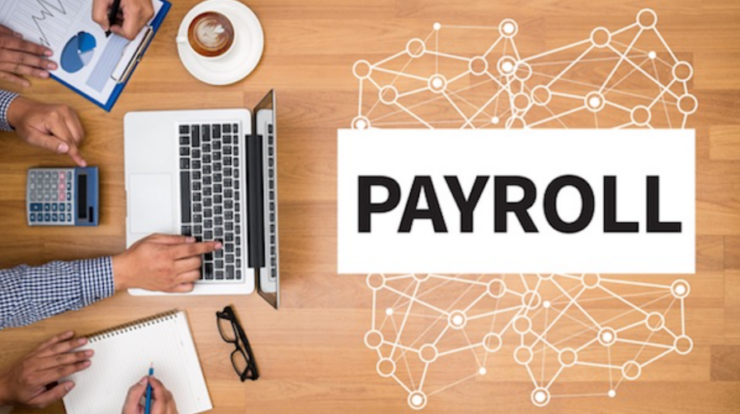
It’s not as hard as you think to increase sales in an online store. It doesn’t mean you have to work yourself to death to do it. Most of the time, you can reach your sales goals by using a number of small techniques that work together.
It doesn’t take advanced magic to learn how to build a successful online business and boost eCommerce sales. Anyone who is willing to learn and implement the lessons in the work can do it. Most eCommerce gurus today didn’t know anything about eCommerce when they first got started. You can get to the top by learning from their mistakes.
Here are ten sales strategies to boost eCommerce sales without spreading yourself too thin.
- Start Upselling and Cross-selling
- Build Trust by Social Proof
- Set Buyer Persona and Targeted Pricing
- Implement A/B Testing
- Implement a Strong Email Marketing Strategy
- Implement Paid Traffic to Boost Up the Sale
- Offer Free Product
- Optimize Your Store For Mobile Optimization
- Use Excellent User Interface and User Experience
- Create an Emergency To Get People To Act
Start Upselling and Cross-selling: What if a customer is about to pay for a protein powder and gets a personalized recommendation for a bigger, better protein powder that costs only $4 more? Or they want to buy a similar product with different ingredients and get a suggestion for the same. They’ll want to make changes to their product.
Upselling and cross-selling are great ways to make more money and build relationships with your customers that will last for a prolonged time. It works because you mostly sell to people you already know and who already know you.
You don’t have to code to add these processes to your online store, which is good news. Several upsell apps can be fully integrated with WooCommerce, Shopify, and other popular eCommerce platforms.
Build Trust by Social Proof: Why should someone choose your online store when there are so many others? The answer is social evidence. Today, how people feel about e-commerce products on social media sites can make or break a sale or even a whole brand.
You can use the power of social media in many ways to boost sales for your eCommerce business. It’s also a great SEO sales strategy for eCommerce.
A good start is to show off good reviews and celebrity endorsements on your social media pages. But it’s not a good idea to get rid of bad reviews. Getting five-star customer feedback is just as important as making sure your review section is real.
If you really want to boost eCommerce sales, the influencers you choose to work with should have a social persona that fits with the needs of your target audience.
Set Buyer Persona and Targeted Pricing: Your competitors always change their prices and start new sales strategies based on how the market is doing. You’re likely to fall behind if you don’t have specialized, targeted, and flexible pricing models.
One way to do this is to optimize prices based on where an IP address is. With IP geolocation, you can look at the traffic to your website and offer different prices based on what you know. If you don’t have different prices for someone in the US and someone in India, you could lose money. You must also think about tax rates and other factors that affect prices in different areas.
You can also use IP data to set up geo-targeted matches to boost sales through eCommerce. For example, a customer from South Asia might be more interested in products related to cricket, while a customer from Canada might be more interested in products related to ice hockey.
This is a great way to boost eCommerce sales because it can make customers happier and increase your profits.
Implement A/B Testing: A/B testing is an excellent way to find out which design, function, and content increase conversions and which don’t. With A/B testing, you can try two different designs for the same product to see which one gets more traffic. You can move the navigation buttons around to see what makes the customer’s experience better.
Basically, you can run tests to learn more about how your online store works so you can make informed decisions. Still, A/B testing isn’t a one-time sales strategy. It’s a smart process that builds on the results of previous tests. Consistency is important.
Implement Strong Email Marketing Strategy: The next step in building an email list is to make it a crucial part of your marketing strategy. Sort your audience into groups based on what they’ve done, like what products they’ve bought from you. What do they want when it comes to getting emails from you about promotions?
Your email list provider can help you do all of these things and more sales strategies. For example, when you ask people to confirm their subscription, you could use checkboxes to find out:
- What kind of products they’re looking for
- What kind of sales do they want to hear about
- How they found out about your shop
Implement Paid Traffic to Boost Up the Sale: Your social media posts can only be seen by people who already follow you. If you want to sell more online, you can reach a new group of people through paid ads.
There are many ways to reach the right people with sponsored content on social media platforms. To find your ideal eCommerce target audience, you can reach out to people based on things like where they live, what they like to buy, how old they are, or what gender they are.
Also, make sure you post new content often. People don’t remember much. If a brand reaches out to them once a month, they won’t pay attention.
Schedule ads and make a paid ads calendar to stay on top of things and consistently increase eCommerce sales.
Offer Free Product: Giving away free products helps customers trust you. And you don’t have to give things away for free. You can give people free trials of your products so they can see how good they are before they buy.
To raise the average order value, you can also set your sales strategy and offer free shipping and delivery on orders over a certain amount.
Instead of a way to increase eCommerce sales that costs you money, think of it as an investment which will help you build value with new customers.
Optimize Your Store For Mobile Optimization: Owners of mobile eCommerce sites are, in fact, getting ready. Statista says that the conversion rate for mobile shoppers is going up: it recently hit 3.5 percent, which is very close to the 3.9 percent conversion rate for desktop shoppers.
Now, the most important thing for eCommerce retailers is to have a website that looks good, is optimized for conversions, and works well on mobile devices.
This means that there is a lot of competition, and stores that don’t offer a smooth mobile experience miss out on a lot of sales (aka money).
Use Excellent User Interface and User Experience: To make your site work well, look good, and stick in people’s minds, you’ll need to put user experiences (UX) and user interfaces (UI) at the top of your development list.
Every e-commerce site sells different products that meet the needs of different groups of people in different ways. But the steps you take to buy something online are more alike than you might think. Most of the time, these sales strategies will require gathering info on a shopper:
Comes in through a homepage Uses the site’s navigation tools to look at product pages.
Adds items to the shopping cart. Clicks on the “shipping,” “returns,” or FAQ pages
Checks out Even though there will be deviations from this path (some shoppers may look at your reviews section, sales section, or save items to a wishlist), interface elements along this path must be designed well to avoid any UI and UX friction.
Create Emergency To Get People To Act: Even if you don’t want to change your eCommerce store and boost eCommerce sales so that it becomes a magnet for energized shoppers, you still need to make people feel like they need to act quickly to boost eCommerce sales. The easiest way to do this is by making things scarce.
In reality, scarcity helps customers see the value of buying something right away. For example, you can put the number of items left in stock on the product page to make people afraid of missing out. Even sending emails to customers about how few of a certain product are left can sometimes get them to act.
Conclusion
Each of these sales strategies works very well on its own. But when used together, they can boost your eCommerce sales like rocket fuel.
Try just one sales strategy today. You’ll be able to see how it affects sales and get an idea of what all of them could do for you in the long run.
Author Bio:
Hi, I am Sonu Biloniya; I’m a SEO/Digital marketing expert currently working at Expert Village Media Technologies, a leading Shopify Development Company. I love to write about SEO, digital marketing, and technology.



